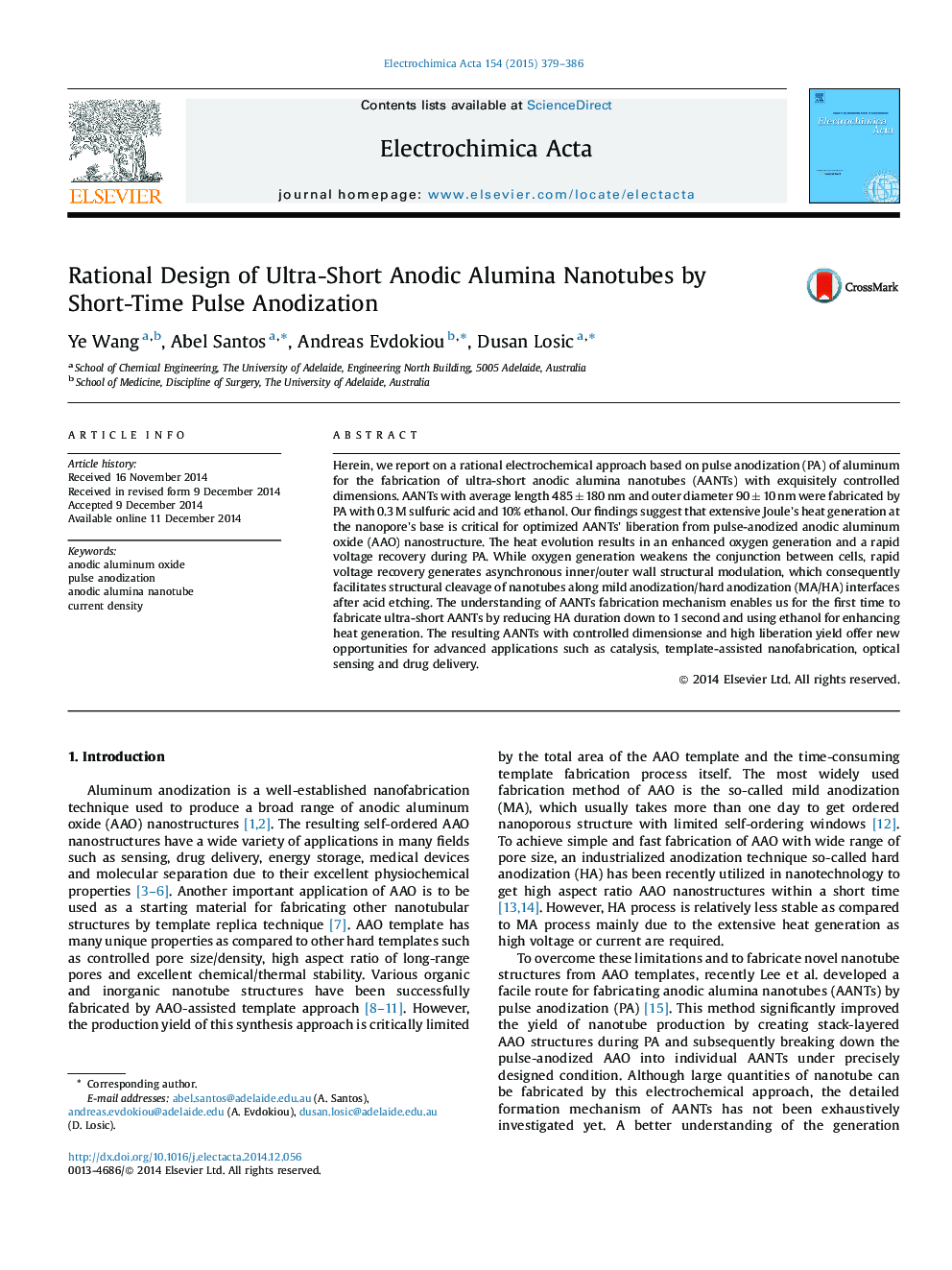| Article ID | Journal | Published Year | Pages | File Type |
|---|---|---|---|---|
| 184706 | Electrochimica Acta | 2015 | 8 Pages |
•Ultra-short anodic alumina nanotubes (AANTs) with exquisitely controlled dimensions.•Heat evolution results in an enhanced oxygen generation and a rapid voltage recovery during pulse anodization (PA).•Understanding of AANTs formation mechanism to fabricate ultra-short AANTs.•High liberation yield of AANTs.
ABSTRACTHerein, we report on a rational electrochemical approach based on pulse anodization (PA) of aluminum for the fabrication of ultra-short anodic alumina nanotubes (AANTs) with exquisitely controlled dimensions. AANTs with average length 485 ± 180 nm and outer diameter 90 ± 10 nm were fabricated by PA with 0.3 M sulfuric acid and 10% ethanol. Our findings suggest that extensive Joule's heat generation at the nanopore's base is critical for optimized AANTs' liberation from pulse-anodized anodic aluminum oxide (AAO) nanostructure. The heat evolution results in an enhanced oxygen generation and a rapid voltage recovery during PA. While oxygen generation weakens the conjunction between cells, rapid voltage recovery generates asynchronous inner/outer wall structural modulation, which consequently facilitates structural cleavage of nanotubes along mild anodization/hard anodization (MA/HA) interfaces after acid etching. The understanding of AANTs fabrication mechanism enables us for the first time to fabricate ultra-short AANTs by reducing HA duration down to 1 second and using ethanol for enhancing heat generation. The resulting AANTs with controlled dimensions and high liberation yield offer new opportunities for advanced applications such as catalysis, template-assisted nanofabrication, optical sensing and drug delivery.
Graphical abstractFigure optionsDownload full-size imageDownload as PowerPoint slide
